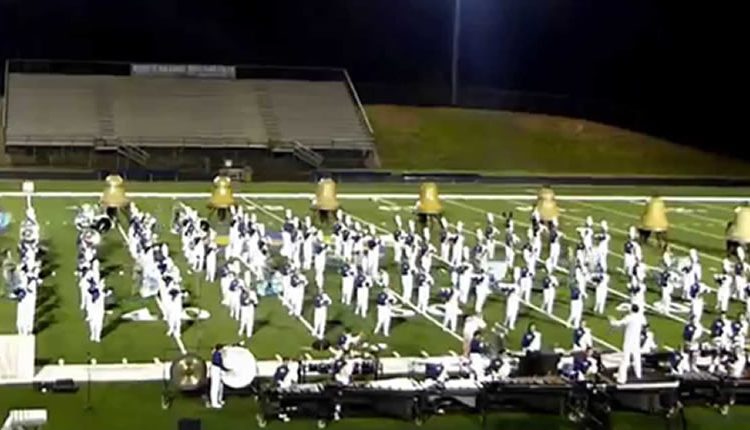Techniques for Drawing Focus
Scott Kurtzweil
Sounds of the Desert
Music: Lawrence of Arabia, Sandstorm from Hidalgo & Caravan
In the last installment of this series, we discussed basic design elements with regard to staging and spacing as well as common demands placed on the performers. In this edition we will cover various techniques for dictating the viewer’s focus to various parts of the stage.
Now that we are fairly comfortable with the basic nuts and bolts of getting your performers onto and moving on the field, it is important to become aware of your audience and specifically, where you want them looking. There are many instances when you will want to call special attention to a specific area of the stage. It may be a specific section of the band proper has important melodic content, a musical or visual soloist, percussion, wind section or guard feature or a myriad of other reasons. Designing into your drill design a specific focal point makes your design appear more systematic, logical and easier to view. If you are writing for a competitive ensemble, it will also directly impact scoring from the standpoints continuity and general effect. Below are a few examples of common focus building techniques. Though these techniques can be used effectively alone, the impact generated from them is enhanced by utilizing two or more simultaneously.
- Framing
Creating a focal point by outlining an important feature or section is a highly common technique used by most drill designers. Page 12-13 is a good example of framing. The clarinets, saxophones and trumpets wrap the flute circle and pull around it as the circle moves back field. - Velocity
Using different velocities or foot tempos is another method to call out a particular section of drill. Because the human eye will first pick up the fastest moving objects in its field of vision, the most effective use will be to make your featured section move faster than the lesser important elements around it. However, other common methods include moving an element in half-time or having that element remain static (“parked”) while other elements move around it. - Density
Like the fasted moving object, the eye will also gravitate toward the most dense object(s) on the stage. Because of this, place a feature section into a solid or mass form while the remainder of the band proper is in anything but solid. - Color Guard
Perhaps the most obvious method of drawing attention to a particular part of the stage is to stage color guard inside or framing that space.


